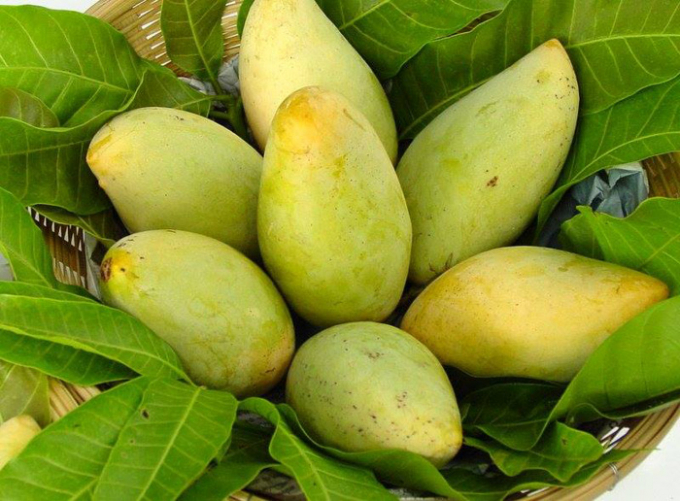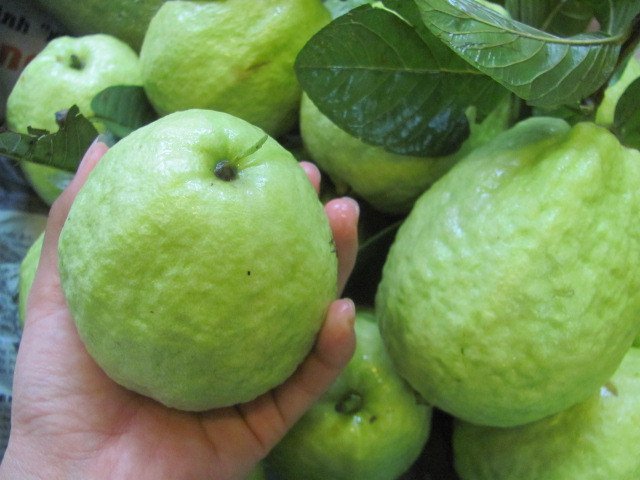November 21, 2025 | 10:19 GMT +7
November 21, 2025 | 10:19 GMT +7
Hotline: 0913.378.918
November 21, 2025 | 10:19 GMT +7
Hotline: 0913.378.918

Vietnamese mango, guava and mangosteen imported into Russia increase strongly
According to the Internation Trade Centre (ITC), In January 2021, Vietnam is Russia’s fourth-largest supplier of mango, guava and mangosteen (HS Code 080450) in volume, reaching 226 tons, worth US$ 807 thousand, up 114% in volume and 62.7% in value over January 2020. The amount of mango, guava and mangosteen imported from Vietnam occupies 6.1% of Russia’s total import volume of this group of fruits.
In January 2021, Russia has imported mango, guava and mangosteen mostly from Peru, reaching 2,550 tons, valued at US$ 4.4 million, up 15.6% in volume and 6.7% in value compared to January 2020. The import proportion from this market accounts for 69.4% of the total import volume.
In the first month, China is right behind Peru with 407 tons in volume and US$ 917 thousand in value. Brazil ranked third in terms of mango, guava and mangosteen supplies to Russia with 285 tons. Despite being in the third rank in volume, but in value terms, Brazil was far behind Vietnam. To be specific, in January, the value of mango, guava and mangosteen that Brazil imported into Russia was US$ 503 thousand, while that of Vietnam was US$ 807 thousand.

Vietnamese guava
According to the Import and Export Department (Ministry of Industry and Trade), the Russian market still has plenty of room for Vietnamese exporters to make use of, because Russia's production of vegetables and fruits is still limited, and due to climatic conditions, Russia cannot produce tropical fruits and vegetables.
In the meantime, the Russian residences’ demands for consumption of vegetable and fruit are increasingly elevating. Therefore, Russia has to import up to 2/3 of the annual vegetable and fruit consumption amount.
As informed by the ITC, the Russian market’s imports of mango, guava and mangosteen have increased sharply in the 2016 - 2020 period with an average increase rate of 68.4%/year. The 2020 import value reached US$ 83.46 million.

Mangosteen is one of Vietnam’s famous specialties
In the past years, exports of mango, guava and mangosteen from Vietnam to Russia are still modest. Statistics from Russia show that in 2017, out of a total of nearly 12 thousand tons of mango, guava and mangosteen imported to Russia, only 59 tons were from Vietnam (worth US$ 300,000).
In 2018, out of a total of nearly 26 thousand tons of mango, guava and mangosteen imported to Russia, 396 tons were from Vietnam, worth nearly US$ 2 million.
In 2019, Vietnam imported to Russia 1,006 tons out of the total 31 thousand tons of mango, guava and mangosteen imported to this country, valued at US$ 5.23 million.
To sum up, despite having modest import volume in Russia, Vietnamese supplies of mango, guava and mangosteen to the Russian market are increasing through the years. Additionally, the import value of this group of fruits from Vietnam to Russia has also increased sharply in the past few years. This shows that the infiltration of Vietnamese mango, guava and mangosteen are deeper and gradually creating a foothold in this potential market.

(VAN) A surge in Ukrainian egg exports, largely driven by soaring sales to the UK over the last few years, has notably pushed up egg prices on the domestic market.

(VAN) The price of Arabica Catimor coffee in Quang Tri is currently at VND 25,000–27,000/kg (fresh cherries), the highest level ever recorded

(VAN) 'From the coffee story, we can think deeper and further about the crop production sector - from development orientations and value-chain organization to international integration,' assessed Dr Le Quoc Doanh.
/2025/11/18/2431-0-161627_248.jpg)
(VAN) Viet Nam accounts for 43% of the world's export volume of Robusta coffee. However, the Vietnamese Robusta coffee brand has yet to gain broad recognition on the global market.
/2025/11/18/5617-2-125215_406.jpg)
(VAN) The consumption demand for premium, healthy, and cold-brew tea products is rising globally, including in the Thai market, opening new opportunities for Viet Nam.

(VAN) The 3F+ model aims for selective resource management, regenerative protection, green education and consumption, all intrinsic to Dabaco’s sustainable development strategy.

(VAN) Carefully packed tea bags, neatly arranged inside containers, begin their 5,000-kilometer journey to Afghanistan, carrying with them the aroma of mountain forests and the pride of Lai Chau province.